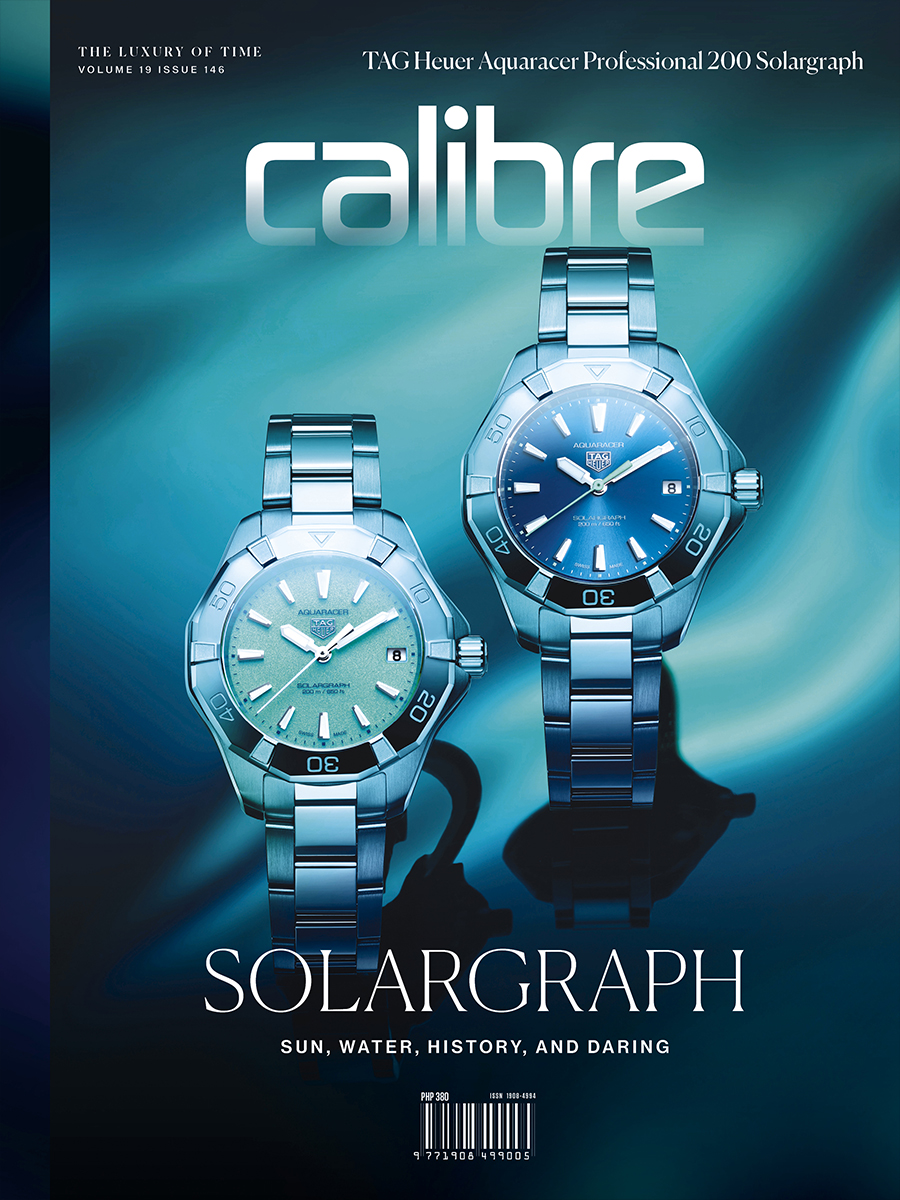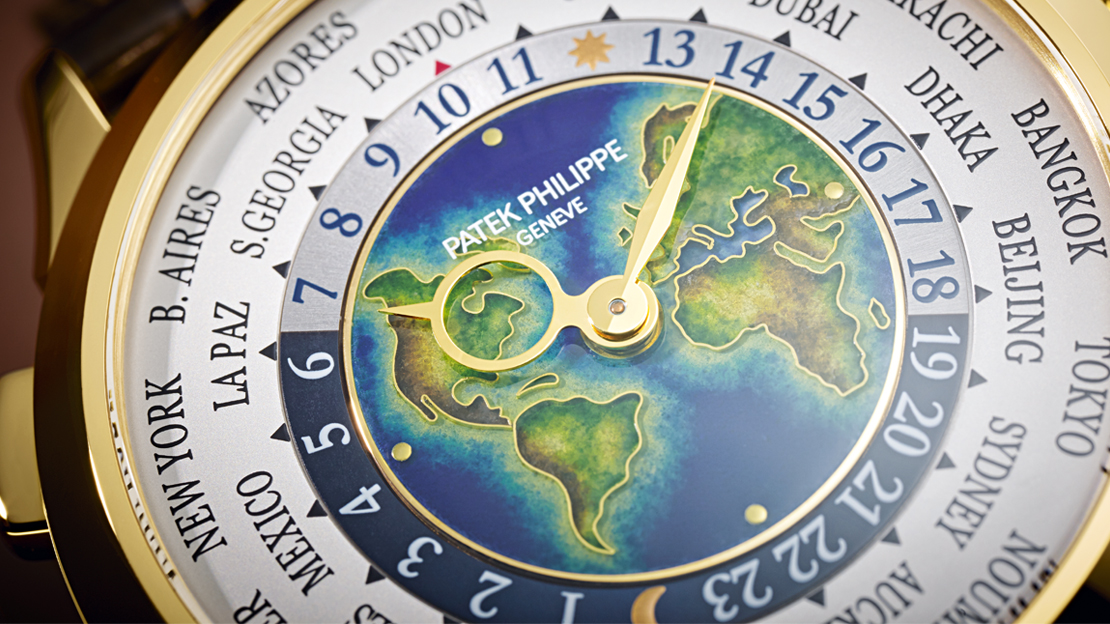DEFINING Patek Philippe’s new ref. 5231J-001 World Time is a planisphere rendered in cloisonné enamel. Cloisonné enameling, just in case it needs explaining, is an ancient decorative technique which involves fusing strips of some sort of metal onto a metal surface, bending these to form an outline, then filling in the resulting spaces — called cloison, French for partition — with enamel paste. As one can guess, the thing then needs to fired in a kiln to create the final product.
It takes serious skills, especially if the aim is to depict a detailed, multihued map of Europe, Africa and the Americas on a surface approximately 20 millimeters across — like what the artwork on the center of the ref. 5231 World Time dial exactly is. Adding to the details of this tableau, framed by a gold ring, are four gold paillons at 12 o’clock, 3 o’clock, 6 o’clock and 9 o’clock — these serve as the hour markers for the local time zone. The city selected as the local time zone is indicated by a red arrow located at 12 o’clock on the outside of the 24-hour scale track. There are 23 other arrows (in black) which, in turn, point to the other cities chosen to represent the different time zones in the world. The 24-hour track with day/night indication identifies the time in the reference city pointed to.
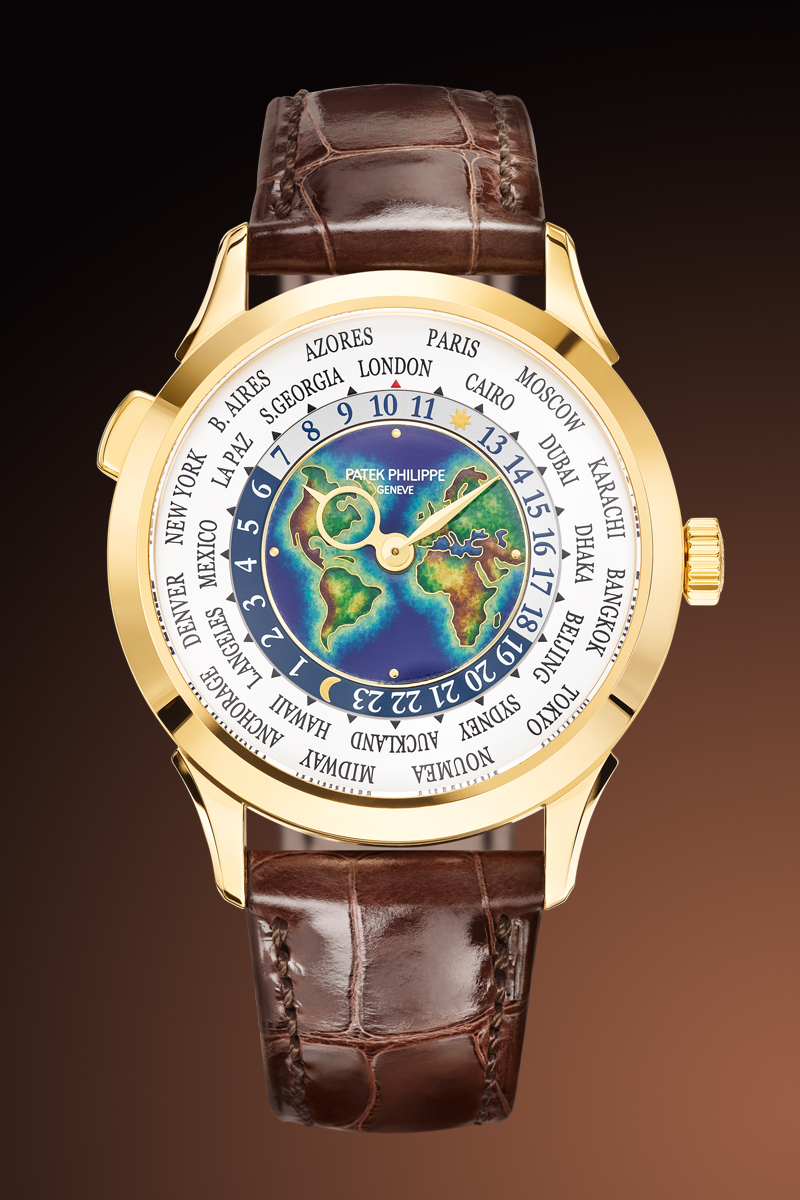
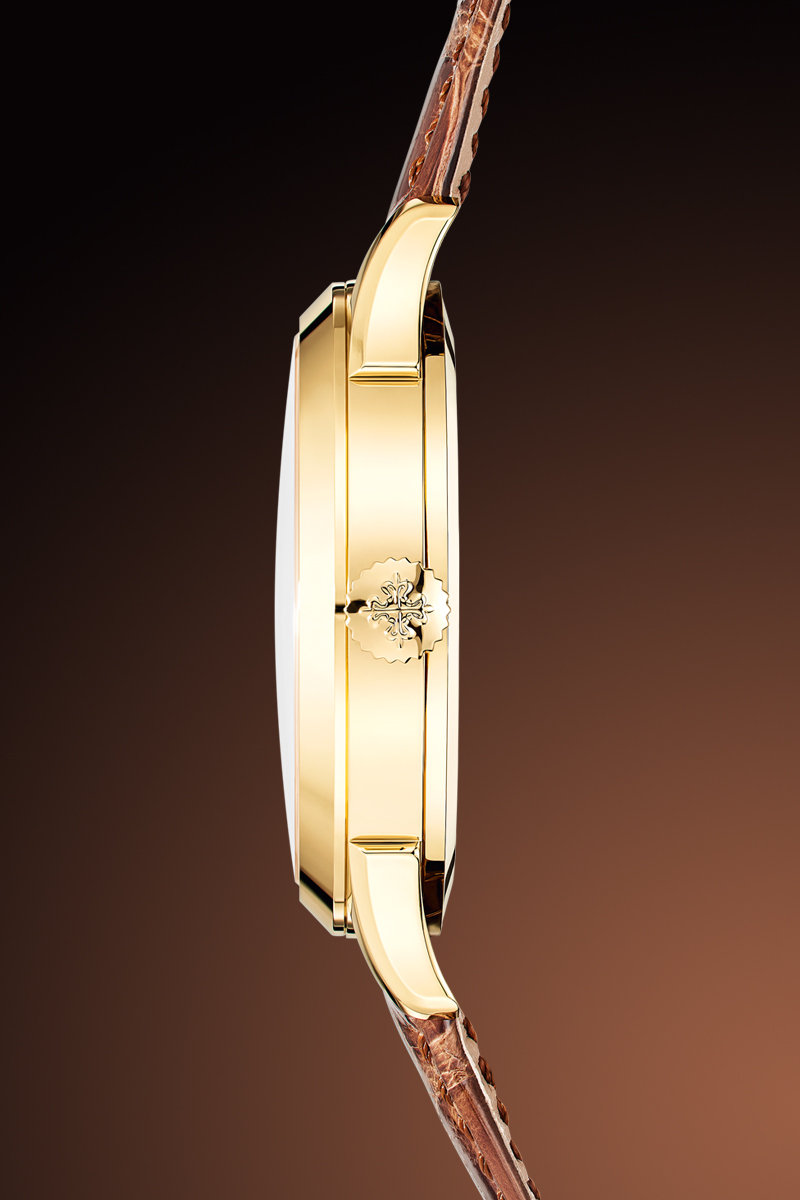
The hands used for the local time zone are short and shorter. The former, for the minute, is lozenge-shaped, the latter, assigned to the hour, has a big ring near its tip — a Patek Philippe World Time piece signature.
Another defining visual element of a Patek Philippe world timer piece is the vast spot allotted to the list of cities — the space takes nearly half of the watch’s dial.
The new ref. 5231 World Time picks up where the ref. 5230 left off. The ref. 5230, which has a guilloche center dial, brought with it a new 38.5-millimeter case similar to Patek Philippe’s Calatrava. It has winglet-style lugs and a slim, smooth bezel. It is this same case in 18-karat yellow gold (the ref. 5230 is also offered in white gold) that drapes over the ref. 5231.
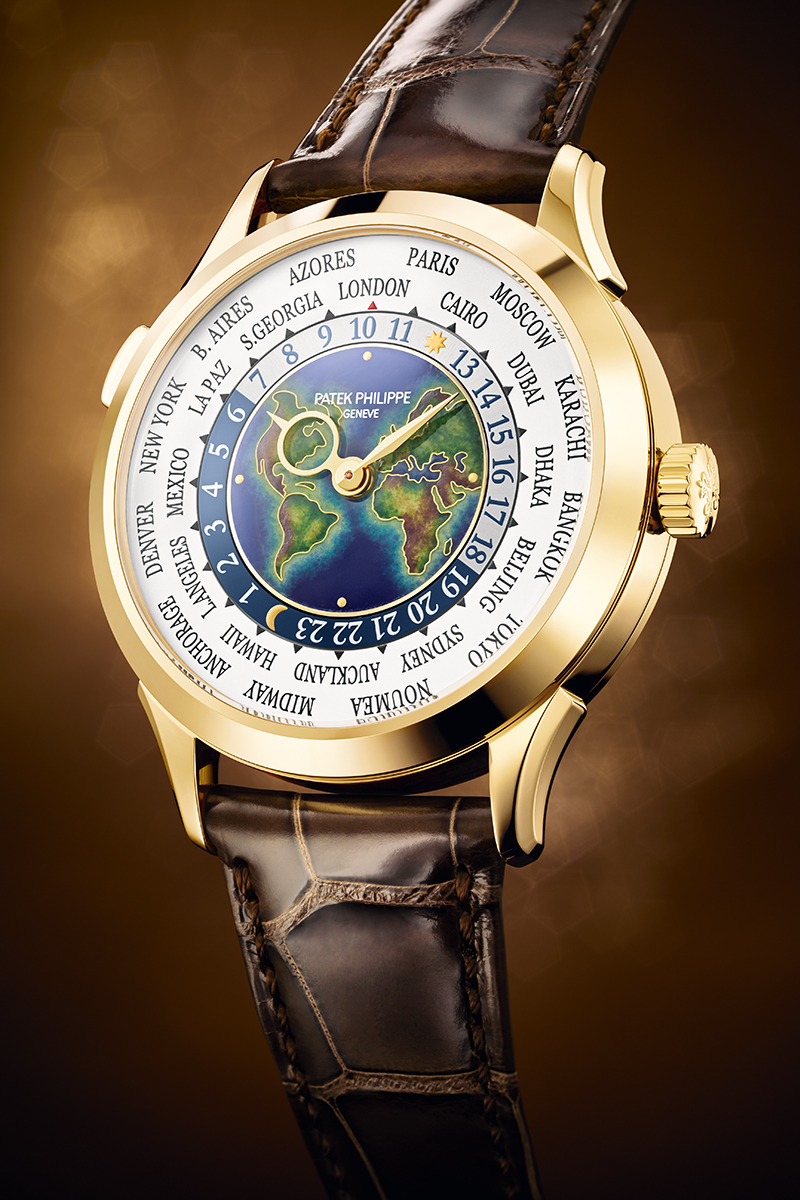
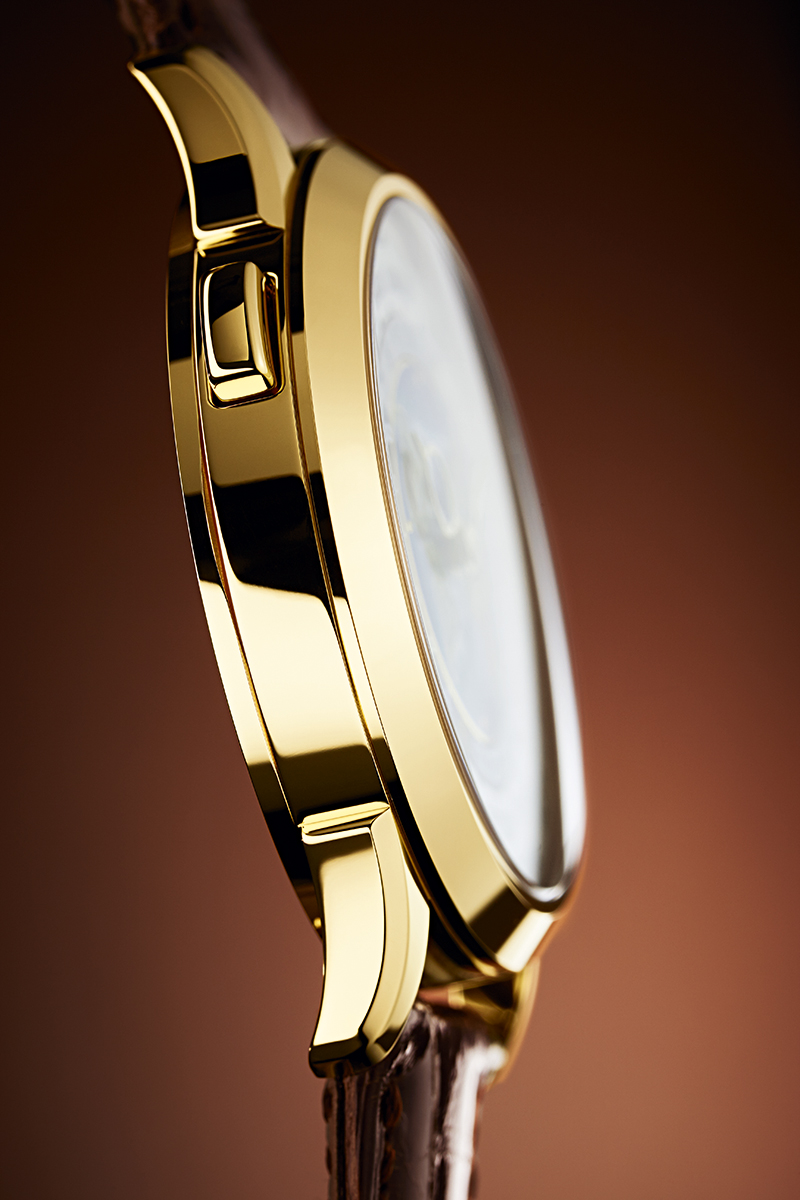
Now, just to be clear; the key difference between the ref. 5230 and ref. 5231 is the latter’s cloisonné enamel artwork.
Ticking beneath the surface of the latest World Time is Patek Philippe’s cal. 240 HU (or Huere Universelle; “universal time”). This is a self-winding movement with a micro rotor made from 22-karat gold residing on one side of it. It counts 239 components, 33 of which are jewels, and spins at 21,600vph. When fully cranked it has enough power to last 48 hours — that should be longer than any plane ride.
In recent years, the cal. 240 HU has been fitted with a selection of techie Patek Philippe items like the Spiromax balance spring (made from silicon-based Silinvar) and the Gyromax balance wheel. As a Patek Philippe, some of the best of Genevan finishing flourishes have found their way into this movement. A sapphire crystal window on the caseback flaunts all the trimming.
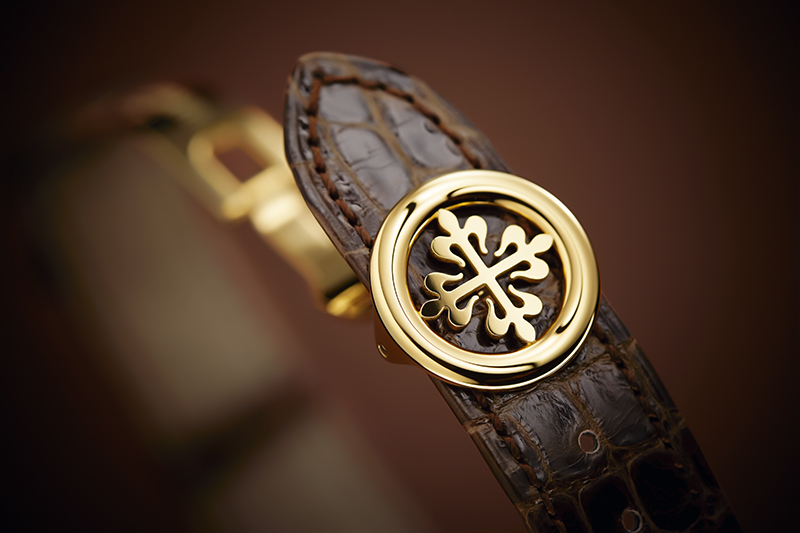
Used by Patek Philippe for decades, the base cal. 240 is only 3.88 millimeters’ thick with the world time complication already attached to it (on the dial side). This world time mechanism, by the way, remains essentially the same as that which watchmaker Louis Cottier invented in the 1930s, and which Patek Philippe almost immediately adopted.
The clever bit about Cottier’s work is that it features a 24-hour ring (on which printed is the 24-hour scale) that rotates counter-clockwise. When lined up with the list of 24 reference cities, the watch within which this complication is fitted can thus track all 24 time zones on earth. Continuously at that (so long as the movement is ticking, of course).
Patek Philippe being Patek Philippe though, the maison simply can’t leave things well enough alone. What the brand did with Cottier’s jobbie was give it a coordinated time adjustment mechanism — this is patented. With this, a pusher (located on the left upper side of the case) can set all displays collectively so these correspond to a different time zone.
Literally, this watch has all the time in the world.

